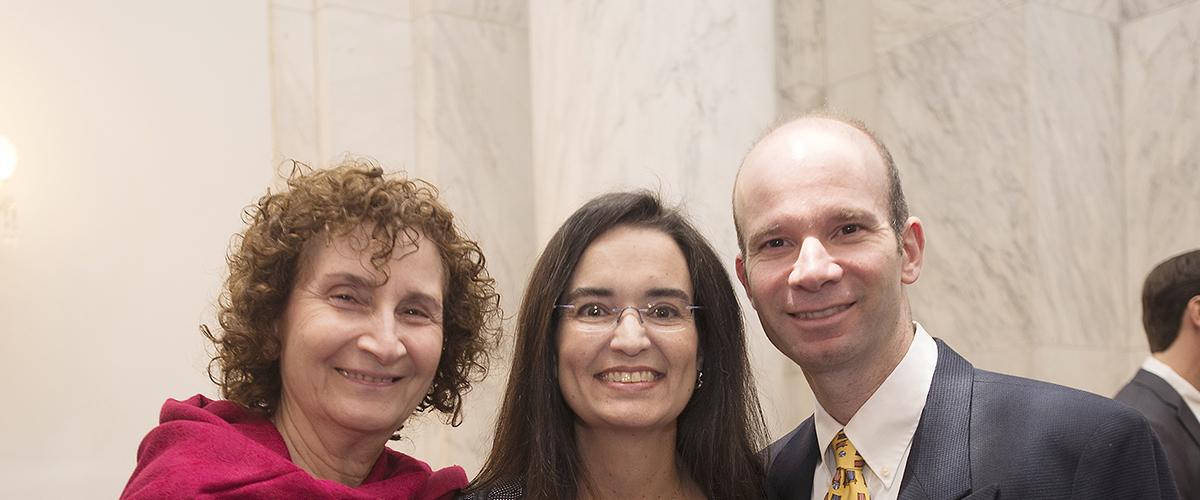There have been new discoveries in the way that congenital myotonic dystrophy (CDM) is inherited.
How is DM Inherited?
Myotonic dystrophy (DM) is inherited in what geneticists refer to as an autosomal dominant fashion. Let’s break that language down.
Autosomal refers to the type of chromosome that carries the DM mutation—autosomes versus sex chromosomes. Humans have 23 pairs of chromosomes—pairs 1 through 22 have the same appearance in both males and females, and are referred to as autosomes; but pair 23 differs among the sexes (sex chromosomes), with two X chromosomes in females and one X and one Y in males.
Autosomal then means that a mutation is carried on one of the chromosomal pairs 1 through 22. In the case of myotonic dystrophy (DM1), chromosome 19 carries the expanded CTG repeat mutation in the DMPK gene; for DM2, it’s chromosome 3 that carries the expanded CCTG repeat in the CNBP gene.
Dominant means that a mutation only has to be on one of the two members of a chromosomal pair to cause the disease. So, in DM1 (myotonic dystrophy type 1) it’s only necessary that the mutation in DMPK be on one member of the chromosome 19 pair, or one member of the chromosome 3 pair for DM2. Recessive disorders have to have the mutation on each member of a chromosomal pair and thus must be inherited from both parents.
Is Congenital DM the Same?
Autosomal dominant inheritance would typically mean that DM could be passed along by either parent. However, for congenital myotonic dystrophy (CDM), inheritance patterns are almost exclusively maternal. This maternal bias has been a mystery, since the “rules of genetics” would indicate that the likelihood of inheriting a DM mutation from either parent should be equal.
Drs. Karen Sermon (Vrije Universiteit Brussel) and Christopher E. Pearson (Hospital for Sick Children) and their colleagues explored the molecular basis for the maternal bias in the inheritance of CDM. They evaluated multiple generations of several families, including 20 individuals with CDM.
While the length of the CTG expansion was clearly greater in CDM than DM1, the investigators confirmed prior findings that the range of repeat lengths partially overlapped, suggesting that CTG repeat length was important, but not the only factor in determining whether someone had DM1 or the more severe CDM.
Genetic changes, such as the expanded CTG in DM1, can cause disease, but there are other changes in DNA that go beyond changes in the sequence of bases (A, T, C, G)—these changes also are heritable and referred to as epigenetic changes. To understand the basis of maternal inheritance bias in CDM, Sermon and Pearson looked for a pattern of epigenetic changes in the vicinity of the DMPK gene on chromosome 19.
The investigators identified specific epigenetic changes adjacent to DMPK in nearly every CDM patient studied, changes that were not observed in DM1 patients. CDM, therefore, appears to require both a long CTG repeat expansion and this epigenetic change.
CDM and Maternal Bias
So, what causes the maternal bias in CDM inheritance? The investigators speculate that the maternal inheritance bias in CDM may be a consequence of failed survival of sperm that carry the epigenetic change in DMPK. Since sperm without the epigenetic change are at a survival disadvantage, the chances of paternal inheritance are considerably reduced. There are rare cases of paternal inheritance and these cases are sought by and under study by this research group to further advance understanding of CDM. For more information, access the research article.

